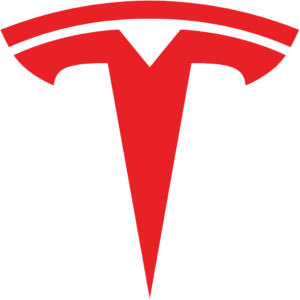Tesla’s Austin Terafactory ….. EV Range Ratings and Real Experience
**** Tesla’s Austin Terafactory Status: Simultaneously with Elon Musk’s announcement that Tesla was building its next US plant in Austin, TX (right where I had “recommended” to Elon that it be located in my May 2nd blog posting), dozens of bulldozers, scrapers, and power shovels from Ranger Excavating were at work on the site. At least two Tesla fans are producing daily site work updates on YouTube based on superb drone footage, Jeff Roberts, and Joe Tegtmeyer.
Many have jumped to the conclusion that the site currently being worked will be the plant site. Not so. This small corner of the property Tesla purchased is below Harold Green Road east of Hwy 130, and it’s way too small for a four to five million square foot manufacturing plant. The plant will be located north of Harold Green Road east of 130 and south of Webberville Road (Hwy 969). The current work on the property has to be done anyway, and is being done to make (and show!) progress while buying time for the site and building architects to finish their plans and actually locate the plant and its associated roads and buildings on that segment of the property. It’s also likely that Tesla’s site development plans are subject to approval by a host of local agencies and organizations.
As far as I know, there are no surveyor stakes inside this northeast part of the property. Ranger is now starting to clear trees and pump out water from the northwest corner of this southeast property segment. The drone footage shows that there is a tremendous amount of water draining and soil fill required alongside Hwy 130 on Tesla’s northeast plot of land.
It’s not clear to me to what use the Tesla property west of Hwy 130 will be put. The land could be sold to Tesla’s suppliers, or it might be used to build Tesla’s new global headquarters building! Whoop! Whoop! One could imagine a Tesla Boring Company tunnel from the west side of Hwy 130 right to the plant entrance. Or why not think a bit bigger and create a Tesla tunnel and transport system right from downtown Austin to Tesla’s plant door. At a minimum, Tesla could at least build a bicycle path from downtown Austin to its plant.
If the plant construction at Giga Berlin is any example, Tesla’s Austin Terafactory is going to go up incredibly quickly. Stay tuned……….
**** EV Range Ratings: Prospective electric vehicle buyers are overly anxious about battery-powered electric vehicle range. This range paranoia usually disappears after about a month of driving their new electric vehicles. As I have pointed out in at least three previous blogs here, here, and here, all these range worries will soon evaporate for a variety of reasons. In addition, EV shoppers are further confused by manufacturers’ EV range ratings that are often deliberately misleading. In everyday driving, especially on the highway, it is rare that you will ever achieve the advertised mileage range rating for any electric vehicle.
When we are talking about advertised mileage ranges there can be a considerable difference between advertised and real world experience mileage ranges. This is in contrast to the range on the vehicles’ dashboard display that shows miles remaining while the vehicle is in operation. That number seems to be reasonably accurate as it reflects the feedback from real-time sensors in the vehicle management software system during a trip or a complete battery discharge cycle.
Bear in mind that as with gasoline and diesel powered vehicle fuel economy ratings, the EV manufacturers’ range ratings are measured under the very best of conditions – the correct ambient air and battery temperatures, tires over inflated, HVAC off, radio off, lights off, level roads, generally the smaller tire/wheel option, constant cruising speed – generally 65 to 75 mph, smooth road surface, slow acceleration, and so on. In particular, cold weather can severely restrict a typical electric vehicle’s range, sometimes by up to 30% – specifically those EVs with resistance-based in-car heaters, as opposed to vehicles that use heat pumps for HVAC such as Tesla’s Model Y. So every manufacturers’ advertised mileage range rating has to be taken with a grain (or two) of salt.
Moreover, there is also confusion over what mileage range rating system is used and/or advertised by the manufacturer. It’s an alphabet soup of acronyms – NEDC, WLTP, or SAE – each different in their rigor and real world approximation.
The New European Driving Cycle (NEDC) is the oldest EV range rating system. It is by far the most generous in its range estimates. Even though European EV manufacturers are supposed to use the new Worldwide harmonized Light vehicles Test Procedure (WLTP) since September of 2018, many still state the NEDC figures in their advertising, for obvious reasons. The US’s Environmental Protection Agency (EPA) test is the most conservative of the three tests.
In an Inside EVs article, David Roper compares a small sample of plug in electric vehicles and comes up with the following differences between the rating systems. Remember these are all estimates. Based on his samples across a total of fifteen vehicles, the WLTP number is 21.5% lower than the NEDC number, the EPA number is 10.8% lower than the WLTP number, making the EPA number 30% lower than the NEDC number. Thus a 200 mile NEDC range is equivalent to a 157 mile WLTP range that is equivalent to a 140 mile EPA range.
All these Roper numbers have standard deviations of course, but we aren’t trying to be that accurate here – just making the point that these three range rating systems are quite different in how closely they approximate real world driving conditions. The EPA combined rating is itself an approximation, but more likely to be closer to the truth than the other two rating systems.
In January 2020, Mat Watson, the Car Wow guy from the UK created an interesting YouTube video where he took six electric vehicles and after fully charging them “drove them until they died”. His findings are summarized in the table below (Watson’s numbers).

** [I believe the mileage range for the Tesla should have been 322 miles, not the 348 miles Watson lists, but it hardly matters. 322 miles range = 84%; last two columns mine.]
Watson made every effort to be “scientific”, setting each car’s inside temperature equally at 20 degrees C, using cruise control on the Motorway, driving at the speed limit, using economy driving mode, setting tire pressures to each manufacturer’s specifications, regenerative braking set equally, etc. He noted that the ambient temperature was 7 degrees C, or about 45 degrees F, thus reducing each car’s range somewhat.
There are two lessons in Watson’s results. One, the average of actual range to advertised range for the six cars was about 81.5%.
Two, it’s not always the vehicle with the largest battery that is the best one – more likely the contrary. Examining overall drive train efficiency (battery, battery management system, inverters, electric motors, drive units, etc.), the three heaviest vehicles with the highest kWh batteries had miles per kWh numbers (average = 2.36 miles/kWh) some 35% below the three lighter weight cars with the smallest batteries (average = 3.64 miles/kWh). The Kia eNiro’s numbers are not a fluke. That car has matched many of Tesla’s models’ efficiencies in other reports.
Battery size in kWh itself is no reliable indicator of potential vehicle range. Items such as total vehicle weight, aerodynamic drag, drivetrain efficiency, HVAC efficiency, tire and wheel size, amount of regen braking in use, and more all affect battery range. The three lightest vehicles above weigh on average 25% less than the average of the three heaviest. Conversely, the three heaviest vehicles average 33% heavier than the average of the three lightest cars. Every pound of weight in an electric vehicle is a drain on the vehicle’s battery and the vehicle’s range.
All this just goes to show that estimates are just that, and as the saying goes: “Your mileage may vary!” Caveat Emptor!
Image courtesy Pixabay
Your feedback in the form of comments or suggestions are welcome in the comment window. Thank you for following my blogs on this site and for participating in my blogging community.




